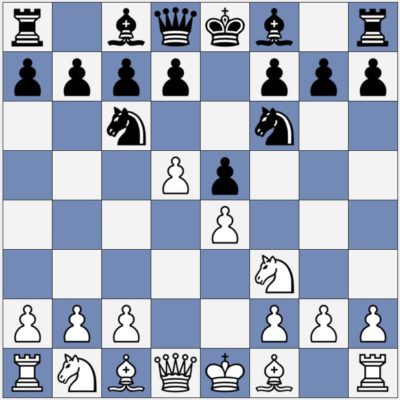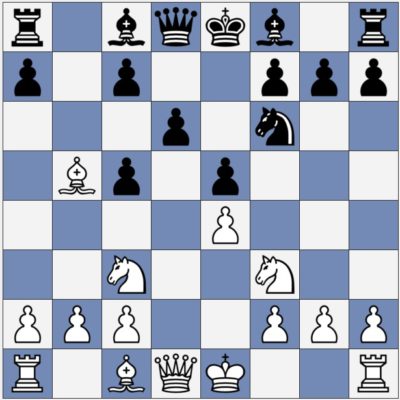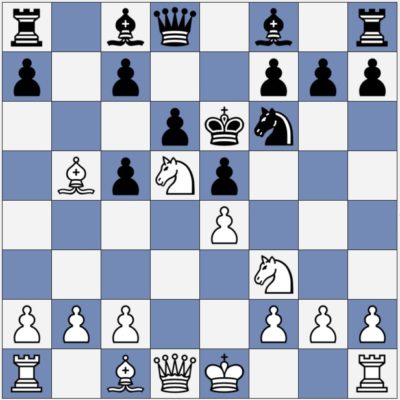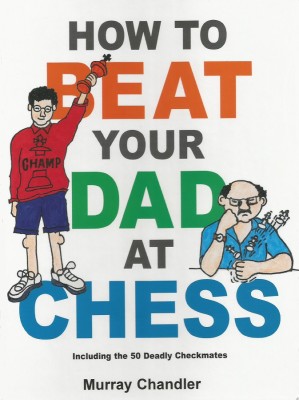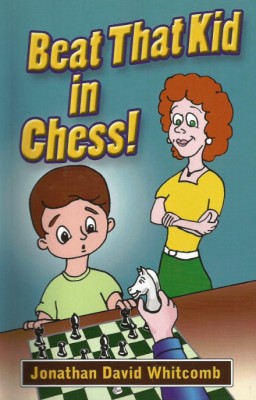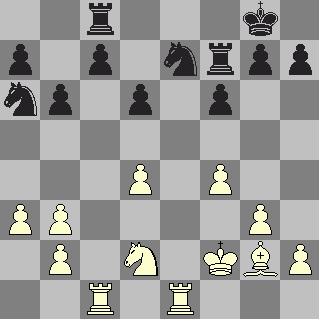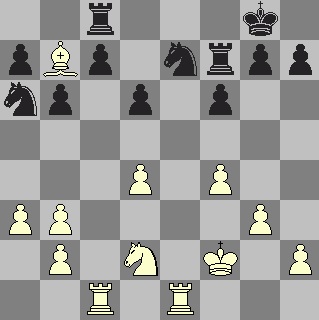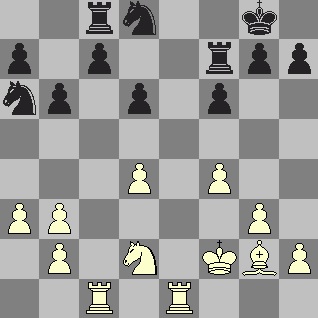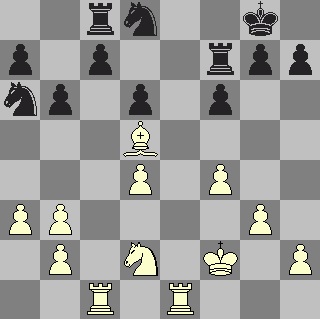By the chess teacher Jonathan Whitcomb of Murray, Utah
The following chess game I played, late in 2016, against a beginner in the Salt Lake Valley. This brief online chess lesson may be helpful to other beginners, although the best way to improve your ability to win is to play many games and to take private chess lessons.
I played white against one of my beginner students, a gentleman in a retirement home.
1) e4 e5
2) Nf3 Nc6
3) d4 . . . . This is the Scotch opening. Black should now capture the pawn on d4.
3) . . . . Nf6 (?) This is not the best move.
4) d5 . . . .
Diagram-1: Black to move (the knight on c6 is threatened)
4) . . . . d6? This mistake loses a knight.
5) dxc6 bxc6 Black gets a pawn, but this is poor compensation for losing a knight.
6) Nc3 c5
7) Bb5+ . . . .
Black should now get out of check by blocking with the light-squared bishop: Bd7
Diagram-2: The best move for Black is Bd7
For many chess beginners, to get out of check, moving the king first comes to mind. If the beginner sees a legal move by the king, that move is made. Yet two other types of remedy are sometimes possible, to get out of check: capturing the checking piece and blocking the check. Look at all the legal possibilities.
In some of my chess lessons (most of them are in the Salt Lake Valley), I point out how a particular move may be important tactically or strategically. In Diagram-2, Black may get out of check by moving his knight: Nd7. But interposing with the bishop (Bd7) would be better both in terms of tactics and strategy.
The black knight is already on a good square, but the black light-squared bishop is not yet developed, so it would probably be better to block the check with the bishop. That is looking at the position through the lens of strategy.
On the tactical side, moving the bishop to d7 is also better, but that can be too deep for beginners, so let’s move on to how the game was actually played.
7) . . . . Ke7? This puts the black king into danger.
8) Nd5+ Ke6?
Diagram-3: What is White’s best move?
If you’re a chess beginner, it may take more than a few seconds to find the best move for White in Diagram-3. Before I give you the answer, I’d like to mention a few details about private chess lessons, for I’m a chess tutor in the Salt Lake Valley of Utah.
Chess Lessons in Utah
I normally drive to the home of each of my chess students. Lessons are for one hour, at $25 each, with no charge for travel in the Salt Lake Valley. A slight extra charge applies when I need to drive further, as in a $10 fee for driving to Provo, Utah.
These private chess lessons are arranged precisely for the unique needs of each individual student, so it’s hard to generalize. Call me at 801-590-9692, if you live in or near the Salt Lake Valley of Utah.
Solution to Diagram-3
White wins immediately by checkmate: 9) Ng5#
###
.
For some chess players, what better gift could they receive on Christmas (or on a birthday) than the gift of chess lessons? It’s not so fun to lose every game, and learning a lot, only from the experience of losing, can take years. How much better to speed up the learning process by taking private chess lessons!
Chess does not take a holiday in Holladay, Utah (by chess tutor Jonathan Whitcomb) . . . At least when school is in session, the royal game does not take a holiday in this community up against the mountain foothills in the eastern Salt Lake Valley.
Salt Lake Valley Chess Lessons
I’m not the only chess instructor in the state of Utah, or even in the Salt Lake Valley, but I emphasize a new chess-teaching method: NIP (nearly-identical positions). I used that system in writing my book Beat That Kid in Chess, and I recommend it for those who promote quality chess instruction.
[in Saint Louis, Missouri] Private lessons are an excellent opportunity to get specialized, one-on-one instruction with our highly trained staff. Private lessons include an initial assessment where the instructor will determine the player’s strengths and weaknesses, and then custom tailor a lesson plan to suit the player’s needs.
.



